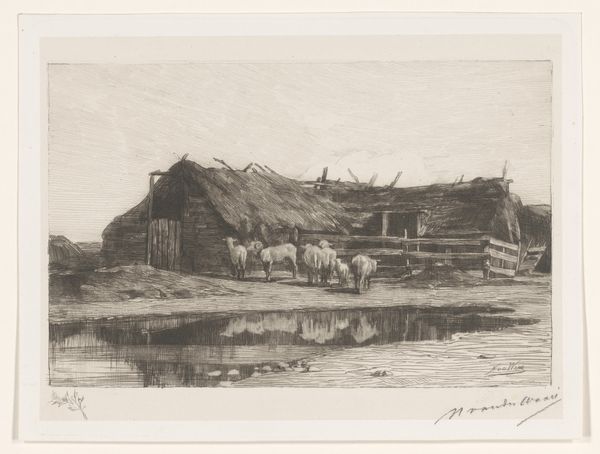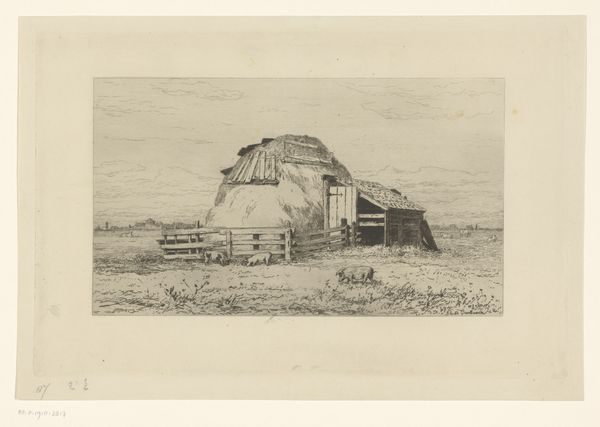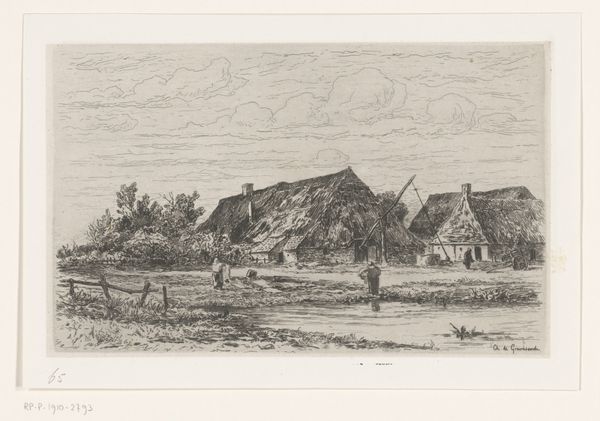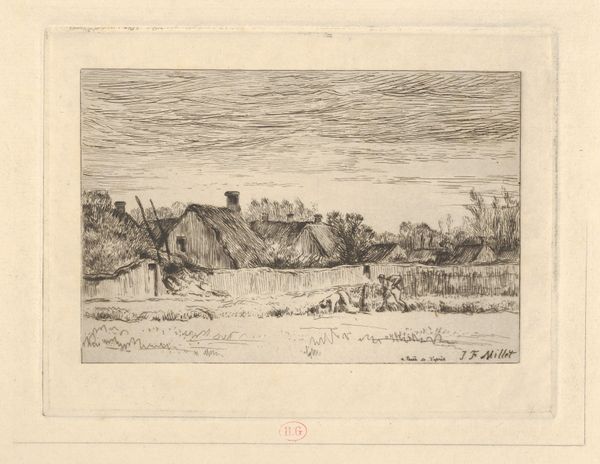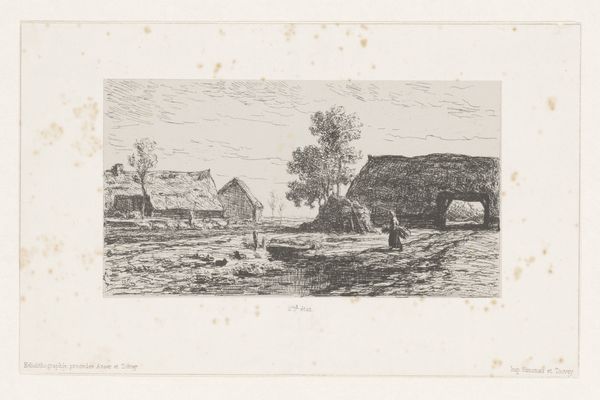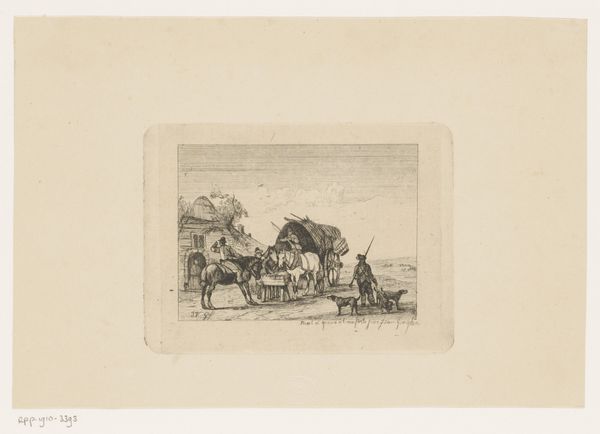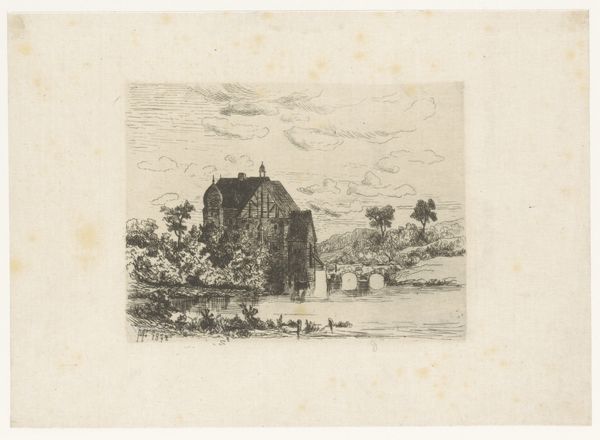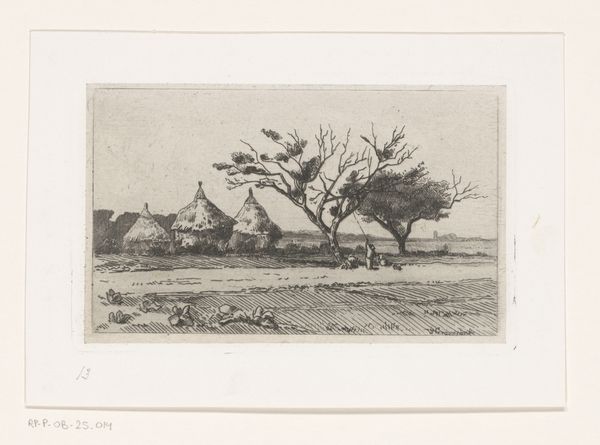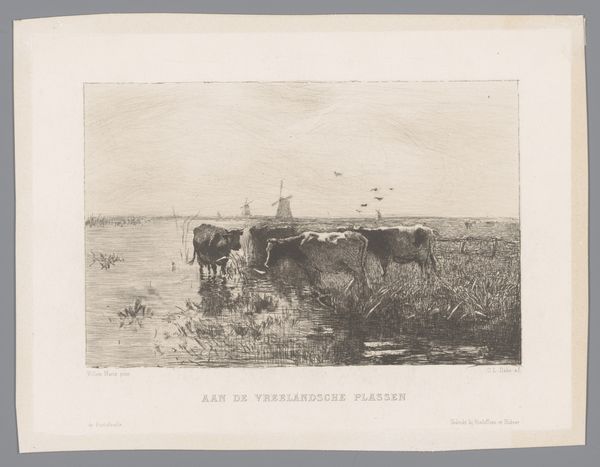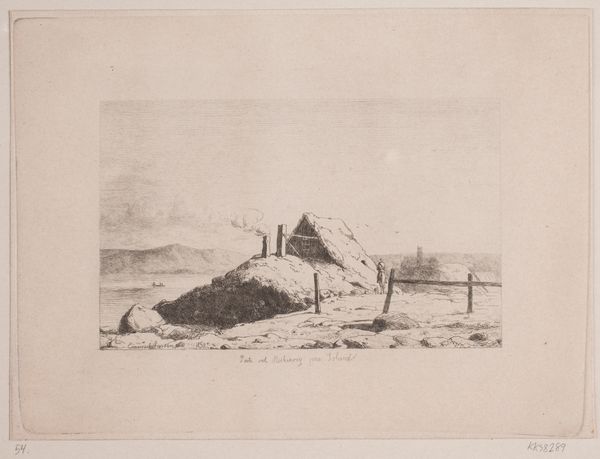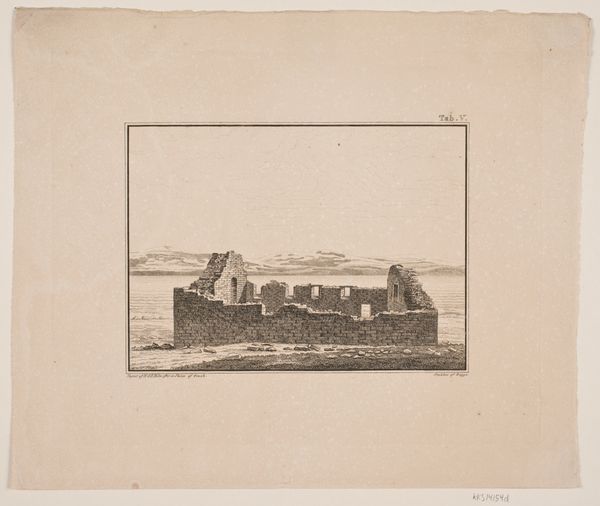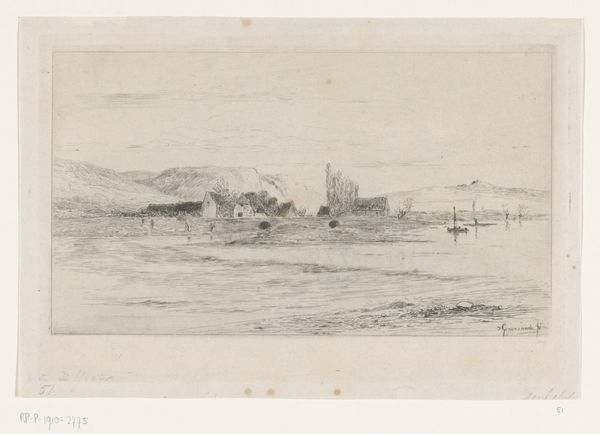
Dimensions: height 224 mm, width 311 mm
Copyright: Rijks Museum: Open Domain
Curator: Looking at this work, “Hunebed te Tynaarlo,” completed in 1869 by Willem Roelofs, I’m immediately struck by a feeling of serene solitude. The monochrome ink and print medium give it a timeless quality, don't you think? Editor: It's stark, isn't it? A melancholic study of place and the public's perception of it. I find it fascinating how Roelofs engages with Dutch cultural heritage. It feels less like landscape and more like place making and monument reclamation. Curator: Absolutely. Let’s break down the composition: the hunebed itself dominates, of course, a stark form against the flat Dutch landscape. Notice how the light is caught by the jagged edges of the stones. Then there is a figure casually sitting on the monument, what seems like a herdsman? and livestock closeby, further establishing a sense of place. Editor: Roelofs seems keenly aware of the growing public interest in archaeology and Dutch history at the time. Drenthe was seen as this almost mystical space full of relics, an attempt to connect to a deep history that pre-dates the nation-state of the Netherlands. This image becomes not just a picture but an argument for preservation, and the herder makes it picturesque, too, but I don't think it is benign! Curator: But how much of it is an idealized version of Romanticism? Is he aestheticizing a location? Because he's certainly manipulating light and shadow to create depth and texture; that's hard to dismiss. Notice the subtle hatching and cross-hatching that suggests both the rugged texture of the stones and the vast openness of the Dutch sky. The ink conveys a range of tonal values effectively, considering the limitations of the medium. Editor: That’s a fair point, a well crafted image makes people receptive and then open for dialogue! He makes Drenthe palatable, if you will. This image, mass produced as a print and circulated widely as part of the Nederlandschen Spectator, becomes important in shaping what Dutch identity will look like and celebrate. I just find that incredibly impactful. Curator: So, ultimately, we’re left with an object where technical brilliance in print and ink converge with pressing socio-historical concerns of Dutch society. The man is just living and being. Editor: And, perhaps, a challenge for future generations: what pieces of cultural identity are we losing to make something beautiful and marketable?
Comments
No comments
Be the first to comment and join the conversation on the ultimate creative platform.
